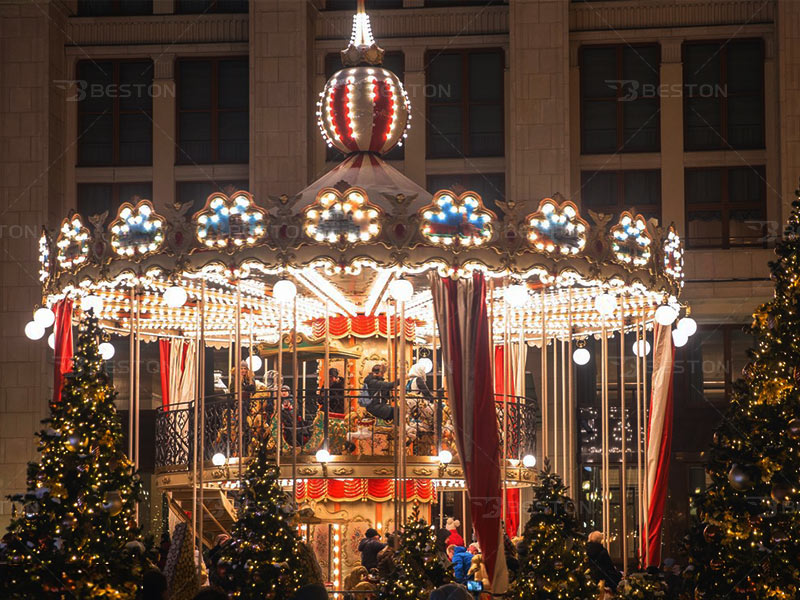Amusement rides face constant exposure to moisture, whether from rainfall, humidity, cleaning processes, or water-based attractions located nearby. Without effective waterproofing, steel structures corrode, wooden components decay, and electrical systems fail prematurely. Implementing advanced waterproofing strategies not only protects the mechanical and aesthetic integrity of each ride but also reduces maintenance costs and downtime.
Understanding Moisture-Related Degradation
Moisture infiltrates amusement rides through multiple pathways—capillary action in joints, condensation within enclosed compartments, and direct surface exposure. Once inside, it accelerates rust formation in ferrous metals, weakens weld seams, and causes swelling in composite or timber sections. Electrical control panels, sensors, and lighting circuits are especially vulnerable, with water ingress leading to short-circuiting and operational hazards.
In a themed attraction such as a carousel ride for sale, prolonged exposure to moisture can dull paintwork, degrade decorative trims, and compromise the precision mechanics driving the rotation platform. The impact is both functional and visual, diminishing guest appeal and asset value. 
Protective Coating and Sealant Systems
The first line of defense is a robust protective coating. Epoxy primers combined with polyurethane topcoats form an impermeable barrier that resists chipping and prevents water molecules from reaching the substrate. For outdoor rides, UV-stabilized coatings prevent photodegradation while maintaining gloss and color depth.
Sealants play an equally critical role in joints, fastener points, and weld seams. High-performance elastomeric sealants maintain flexibility under temperature fluctuations, preventing cracks that could admit water. Application should be meticulous, with attention given to crevice areas where pooling may occur.
Structural Design for Water Resistance
Engineering design significantly influences waterproofing success. Sloped surfaces encourage runoff, while strategically placed drainage channels prevent stagnant water from accumulating on platforms or undercarriages. For rides with complex ornamentation—such as carved horses or decorative panels—drainage holes and hidden gutters can be integrated without affecting visual aesthetics.
In many cases, ride manufacturers incorporate modular component assembly, allowing for easier removal of water-exposed parts during inspections. This modularity can also help preserve investment value, especially for buyers evaluating long-term upkeep alongside carousel price considerations. 
Electrical and Control System Protection
Waterproofing extends beyond the visible exterior. Electrical enclosures should meet IP65 or higher protection standards, ensuring dust-tight sealing and resistance to water jets. Cable entry points require grommet seals, while circuit boards may benefit from conformal coatings that repel moisture and prevent corrosion of solder joints.
Submersible-grade connectors and heat-shrink tubing provide added durability for wiring exposed to outdoor conditions. For rides incorporating LED lighting, sealed lens housings and breathable vent membranes maintain illumination performance while preventing condensation buildup.
Advanced Waterproofing Technologies
Modern waterproofing leverages nanotechnology to create hydrophobic surfaces that repel water at a molecular level. Transparent nano-coatings can be applied over painted or metallic surfaces without altering appearance, offering an additional layer of protection.
Cathodic protection systems, commonly used in marine environments, can also be adapted to amusement rides constructed with large steel frameworks. These systems actively prevent rust by redirecting electrochemical reactions away from critical components.
Inspection, Maintenance, and Lifecycle Management
Preventive maintenance is essential for sustaining waterproofing performance. Seasonal inspections should identify early signs of coating degradation, sealant failure, or water pooling. Damaged coatings should be spot-repaired promptly to avoid spreading corrosion.
Cleaning procedures must be aligned with waterproofing objectives. Using high-pressure water jets without protective shielding can force moisture into joints and electrical compartments, undermining the very protections in place. Low-pressure rinsing combined with appropriate cleaning agents helps maintain surface integrity.
Cost Considerations and Value Preservation
Waterproofing measures represent an upfront investment but yield long-term savings. Preventing corrosion and water damage reduces the need for costly component replacements, minimizes ride downtime, and maintains aesthetic appeal. This has direct implications for resale markets, where a well-maintained attraction commands a stronger position.
For potential buyers assessing a carousel ride for sale, visible evidence of consistent waterproofing and maintenance can justify a higher carousel price, as it signals reliability and reduced future repair costs.
Conclusion
Waterproofing is not merely a protective measure; it is an integral component of amusement ride engineering and lifecycle planning. By combining advanced coatings, intelligent structural design, and rigorous maintenance protocols, operators can safeguard ride performance, protect guest safety, and preserve asset value. In a market where visual allure and operational excellence define success, effective waterproofing ensures that attractions continue to perform—and captivate—season after season.

Comments
No comments yet. Be the first to react!